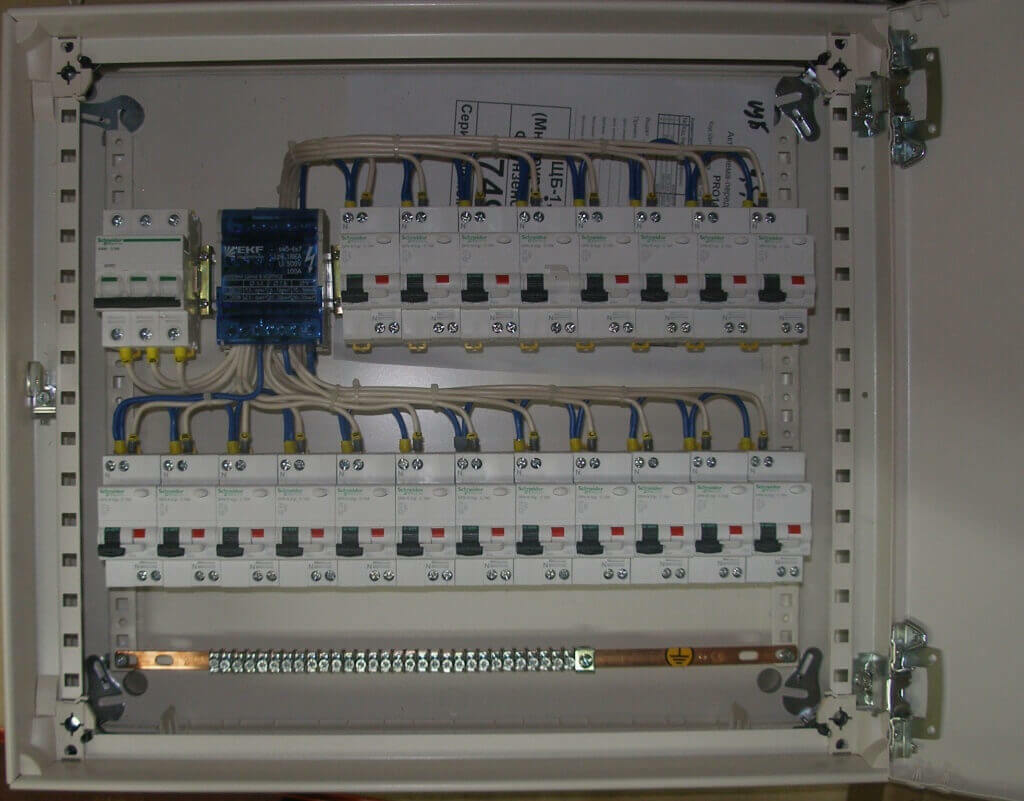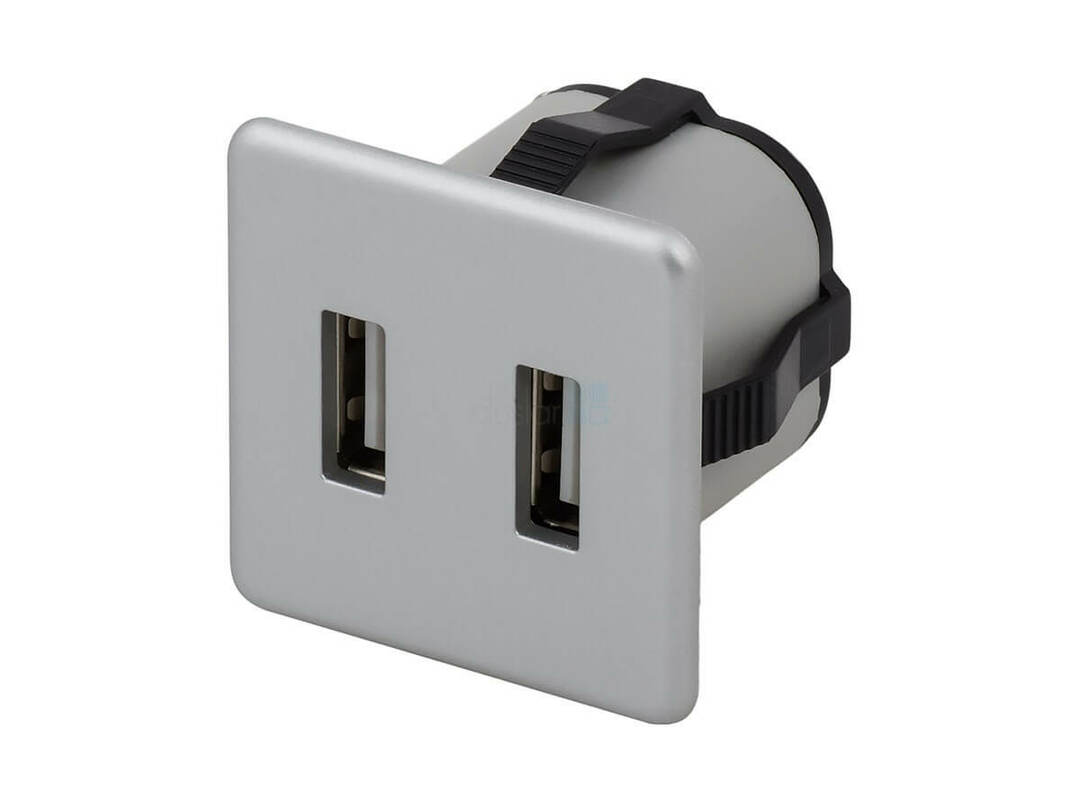Contents
- 1 Principle of operation and operation of the RCD
- 1.1 Motivation for the RCD.Dangerous for the human body electric current
- 1.2 Selection of RCDs depending on leakage currents
- 1.3 Causes of leakage current occurrence
- 2 Types and types of RCDs. Visual and technical designation
- 2.1 The RCD is divided into:
- 3 RCD tripping, main and additional causes
- 3.1 Basic types of RCD connection
- 3.2 One protection device and several circuit breakers
- 4 The main types of incorrect connection of the RCD, zero working and protective conductor
- 4.1 Converter wool to amperes, online calculator
Basic protection of the human body against dangerous voltage and the effect of electric current in household and power elec.ktricheskih networks is to install protective device( RCD).In addition, RCD is used to protect electrical appliances from emergency operation in household and power networks of DC and AC sinusoidal current. But very often it works and the consumer is interested in why the RCD is deactivated on input or the
Principle of operation and operation of the RCD
Fig.1 Operation of the RCD 
The sum of the currents that enter the section must be equal to the currents that come out. This is the main principle of this protective shutdown device. The reason for turning off the RCD for power supply is that the currents that come out of the power section are not equal to the currents that enter this network. This difference is called the value of the leakage current or it is called the differential current. The vector sum of the currents in the phase conductor( I1 ) must be equal to the currents in the zero working conductor( I2 ).In magnitude they are the same, but in direction are differently directed and thereby compensate each other and EMF( electromotive force) is absent. If these currents are not equal, then there is a difference between them and this is the leakage current. It in turn creates an EMF and it in turn, through a solenoid, acts on the tripping mechanism and the RCD is turned off.
Motivation of the RCD.Dangerous for the human body electric current
On fig.1 normal mode is I 1 = I 2. When a person touches exposed wire, a differential current is generated IΔn .If we calculate the current that will pass through the person, it turns out that I = 230 / R h , A, where 230V household electricity supply, Rch is a person's resistance. Although for each person this characteristic is individual, but it is considered to be about 1 kΩ( 1,000 Ω).As a result, we get 230/1 000 = 23 mA.It should be noted that the threshold of sensitivity in humans starts from 0.6 - 1.5 mA.With this current, the person has a palpable irritation. At a current of 10 - 15 mA, a muscle spasm occurs in the person, and this current is called non-emptying. In this case, a person can not independently release the bare wire if he has taken it. At a current of 90 to 100 mA, a fibrillation current arises. With such a current, the heart muscles chaotically contract, and after a few seconds, the heart stops. A safe current for a person is considered to be 2 mA when it passes more than 10 s, and if more than 120 s, then a safe current of 6 mA.These currents, as well as the tripping time, must be remembered when selecting an RCD for a differential current, which would understand what will happen to you if you fall under dangerous voltage. For these reasons, remember that if you turn off the RCD of the water heater, it saves you at least from unpleasant sensations.
Selection of RCDs depending on leakage currents 
According to SP31-110-2003 item А.4.15 if the bathroom is powered on a separate line, it is necessary to provide a 10 mA RCD, if the line is shared with the kitchen and the corridor, it is necessary to install an RCD for current up to 30 mA.For a normal household electric line( sockets, lighting), the protective device is selected for a current of no more than 30 mA( PUE, item 7.1.79.). RCDs for differential currents of 100 and 500 mA as seen above, do not protect the human body from dangerous voltage, and the main purpose is to protect it from fire. When installing a residual current device, it should be understood that it does not protect against prolonged overload, maximum currents or overvoltage. For these reasons, its installation should be in conjunction with a circuit-breaker with an electromagnetic and thermal release, and to protect against overvoltage it is necessary to install a relay against overvoltage or surge protection device. For these reasons, if the termkey disconnects the RCD, and the machine does not work, then the cause of the fault is the leakage current.
And if the RCD is switched off simultaneously with the circuit breaker, the cause of the fault can be both the differential current and the maximum currents that occur during a short circuit.
Causes of
leakage current It should be well understood that the presence of a leakage current is an emergency operation mode or a malfunction in domestic electrical utility networks or malfunctions in electrical appliances. The causes of this current are quite common. The main causes of the leakage current is the person touching the bare wire, flowing through the deformed insulation of the cable or through the conductive element. For example, the reason for switching off the RCD on the water heater can be the leakage current through the water. The insulation of the cable was damaged, the moisture got on the bare wire and a current flowed through it. This current is just not enough to ensure that the difference between the incoming and outgoing currents is 0( zero) and the protection cuts off the emergency area. If it is a water heater, turn off the RCD of this appliance. The water can also be the reason why the RCD on the pump is pumping various fluids.
Types and types of RCDs. Visual and technical designation
Fig.2 Appearance and designation of the residual current device

The RCD is divided into:
- Voltage of household and power mains 220/380 V
- According to the number of poles. If the single-phase load in the power network, then the RCD must be installed bipolar, if three-phase load, then four-pole.
- Rated operating current. The value of the rated( working) currents for the RCD is the same as for the circuit-breakers, it is 16, 25, 32, 40, 63, 80 A
- With respect to the differential current( leakage current)100, 300, 500 mA
- By type of leakage current, which in turn is divided into:

- Variable electric sinusoidal and pulsating current. Type of RCD for the current " AS". Pulsating current is present in adjustable luminaires and lamps, in washing machines in which the speed is regulated.
- 2. Variable and permanent electric pulsating, type of RCD " A". This type of protection is recommended for use where there is consumer electronics, a microwave oven, a computer, a TV, etc.
- Constant electrical and alternating, type of RCD "B". This type of protection device is mainly installed where there is rectified current. In household electrical networks this type is not used.
- To ensure that selectivity is observed when installing 2 or more protection devices in household and power grids, a RCD with tripping delay is used, this is the "S" type of RCD. This type of RCD is used in networks where ATS is used( automatic reserve input), and type " G ", in the same networks, but has a shorter time delay.
Tripping of RCD, main and additional causes
The most common reasons for the operation of the RCD on an electrolyte boiler or water heater, this is an unscrupulous factory manufacturer or various types of malfunctions in the electrical network. If you turn off the ouzo on the , , you must turn it on again. If the appliance works and the RCD does not turn it off, then there was a short-time leakage current. Then you need to use the "Test" button. It simulates emergency operation.
- It is necessary to disconnect the machines that are connected to the network in conjunction with the RCD and determine the why the RCD is disconnected. At the same time, we disconnect the zero working conductors. After they are disconnected, turn on the RCD.If it does not turn off, then click on the "Test" button. If after the "Test" button is pressed, the RCD has worked, then it is working properly. It should be noted that it is necessary to check the operability of the device of a protective shutdown at least once a month by pressing the "Test" button.
- If during the connection a non-load RCD trips, the indicates that it has failed or there are leakage currents at the installation site. If it is correct, then it is necessary to understand why the RCD operates without load. In this case, if several automatic machines are connected from it, then all of them are switched off. Then we determine why the RCD is turned off and turn on the automatic circuit breakers in turn and determine the emergency area of the electrical network.
Basic types of connection of the RCD
Fig.3. One RCD and one consumer 
Any electrician with at least the 3rd digit of the electrician can connect the RCD.The connection scheme is written on the device itself and there is nothing difficult. The only thing that needs to be done before the installation, it is to take into account the nuances when switching on the network and correctly choose the number of outgoing machines for one RCD.You can install one protection device for the entire apartment in the floor panel, if this is an apartment building, as shown by the in Fig. Can be installed separately on the outlet and lighting if there is enough space for installation. This will be the best option for an apartment. When installing and selecting an RCD, it is necessary to take into account the rated( operating) current, which must be one step higher than the rated current of the machine that stands after the protective device. For example, if an automaton is 25 A, then it is necessary to install an RCD with a working current of 32 A before it, and so on. If this is a private house, then it is better to consider the following equipment, one RCD and one machine, if there are not many automata.
One protection device and several circuit breakers
Fig.4 
If, for example, there are many automatic machines in the house( one machine = one room, or = one household appliance), then in this case the size of the electrical board can be huge. For these reasons, it is better to equip the electrical panel in such a way, to install several automatic devices under one RCD, but not more than 5. In this case, it is necessary to correctly calculate the rated current of the protective device relative to the outgoing machines so that their sum does not exceed the operating current of the residual current device. For example, the waste automata BA1 16 A, BA2 16 A, BA3 32 A, the sum 16 + 16 + 32 = A. Hence the RCD must be at a rated current of at least 64 A, and knowing the line of rated currents the best option is the protective shutdown device for the nominalcurrent at 63 A.
As can be seen in Fig.4 there is nothing complicated with the connection, but in some cases, it will be interesting to know why the RCD on the Ariston heater works, if the household network and the protection device are in a satisfactory and working condition. When the RCD trips, the reasons may be in its incorrect connection.
The main types of improper connection of the RCD, the neutral working and protective conductor
- It is not possible to connect the zero working( N ) and the phase conductor that has passed through the RCD with other zero and phase conductors after the RCD.
- Do not connect the ( N) as the neutral working conductor after the RCD with open electrical installation structures, nor can it be connected to the protective conductor( PE).
- It is absolutely forbidden to connect a working and protective conductor in the socket.
- If two protective devices are installed in the electrical network, the combination of zero working conductors will lead to the emergence of an additional leakage current and as a result of the operation of both
- . If there are many RCDs installed in the electrical board, then it is necessary to recheck the connection diagram so that there is no phase and working zero connectionfrom different protection devices
Only the correctly chosen protective shutdown device and its correct connection will protect the person in the event of an accident from the hazardous effect of an electriccurrent.
AC Power Amp Converter, online calculator
| Voltage( V): | |
| Power Consumption( W): | |
| Current: |


